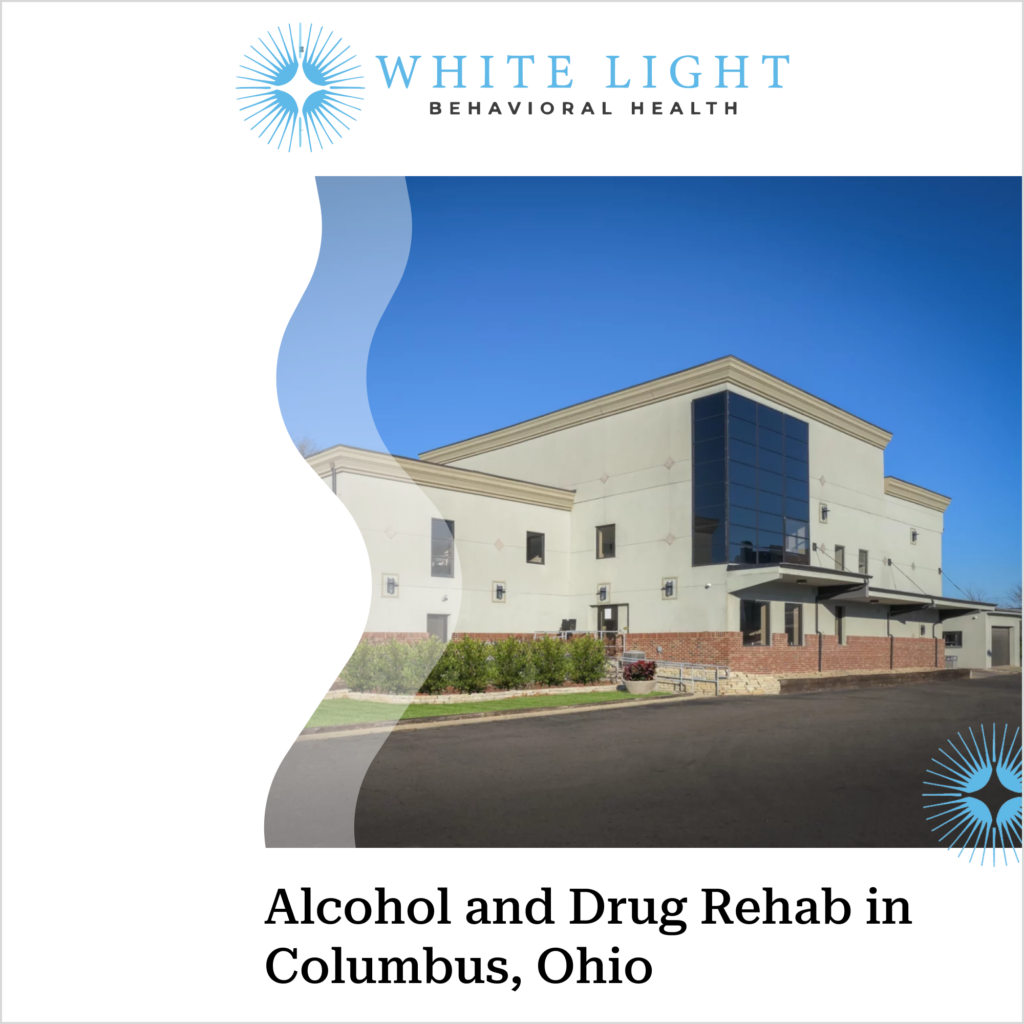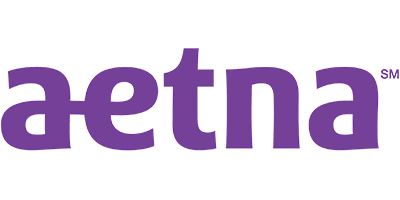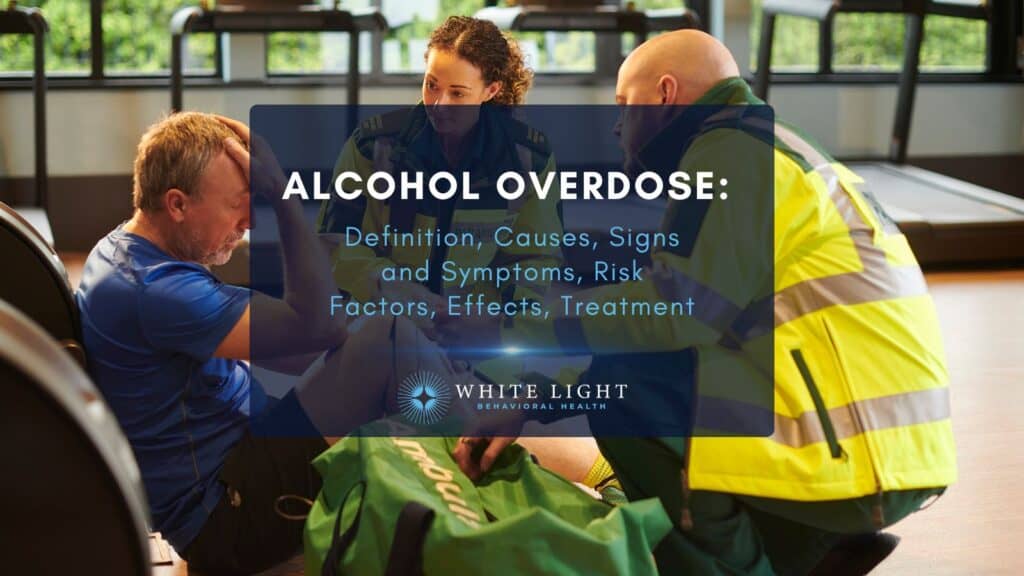Blue Cross Blue Shield in Ohio: Plan Types and Coverage for Drug Rehab and Mental Health

Anthem Blue Cross Blue Shield dominates Ohio’s health insurance market with 31% market share, while Medicaid provides coverage for 3.21 million Ohioans representing 27% of the state’s population (AMA, 2024; USAFacts, 2024). The demand for behavioral health coverage remains critical, as 40% of Ohio’s Medicaid expansion enrollees have primary mental health or substance use disorder diagnoses, requiring over $1 billion in federal funds for addiction and mental health services in 2024 (HPIO, 2025). Both commercial Blue Cross Blue Shield plans and Medicaid managed care programs must provide comprehensive drug rehabilitation and mental health coverage under the ACA’s essential health benefits mandate and the Mental Health Parity and Addiction Equity Act (MHPAEA), which prohibits stricter cost-sharing or treatment limits compared to medical services (CMS, 2023). However, Ohio patients seeking behavioral health services face up to 5× higher likelihood of going out-of-network compared to other medical needs, reflecting persistent network adequacy challenges despite parity laws, with in-network reimbursement for mental health clinicians averaging 22% lower than other medical specialists (Community Solutions, 2019; NAMI/RTI, 2024).What Types of Blue Cross Blue Shield Plans Are Available in Ohio?
Blue Cross Blue Shield plans in Ohio through Anthem include 3 primary categories: individual marketplace coverage, employer-sponsored insurance, and Medicare Advantage options (Elevance Health, 2024). Ohio residents selecting individual marketplace plans choose from 13 different insurers on the ACA Marketplace as of 2025, with nearly all areas offering at least 5 insurer options for comprehensive coverage selection (HealthInsurance.org, 2024). Anthem Blue Cross Blue Shield maintains 31% market share as Ohio’s largest health insurer, providing extensive plan varieties across all coverage categories (AMA, 2024).
The majority of Blue Cross Blue Shield individual market plans in Ohio operate as HMO or EPO structures that provide no out-of-network coverage for non-emergency medical care (ODI, 2023). PPO plans represent a minority of available options but deliver partial out-of-network benefits with higher cost-sharing requirements for out-of-network providers. Employer-sponsored Blue Cross Blue Shield coverage follows similar plan structures while offering lower average deductibles of approximately $1,735 for single coverage compared to individual marketplace options (KFF, 2023). Medicare Advantage plans through Anthem provide integrated benefits including prescription drug coverage for eligible Ohio seniors. Did you know most health insurance plans cover substance use disorder treatment? Check your coverage online now.How Do HMO Plans Cover Mental Health and Addiction Treatment?
HMO plans cover mental health and addiction treatment through structured networks requiring primary care physician referrals before accessing behavioral health specialists. Ohio patients enrolled in HMO plans face significant network limitations, with behavioral health patients being up to 5 times more likely to seek out-of-network care compared to other medical needs (Community Solutions, 2019). The majority of individual market health plans in Ohio are HMO or EPO type, meaning they offer no coverage for out-of-network non-emergency care (ODI, 2023). National data show out-of-network use is 3.5 times higher for mental health and substance use treatment than for medical/surgical care, indicating persistent network gaps (NAMI/RTI, 2024).
Mental health parity requirements mandate that HMO plans impose no stricter cost-sharing or treatment limits on behavioral health benefits than on medical/surgical benefits under the Mental Health Parity and Addiction Equity Act (CMS, 2023). Ohio integrated behavioral health services into Medicaid managed care in July 2018, extending parity protections to about 2.6 million Medicaid enrollees (Community Solutions, 2019). Insurers’ spending on behavioral health claims has risen to an average of $122.79 per claim in 2023, up from $106.84 in 2018 (PwC, 2023). HMO coverage includes all 3 FDA-approved medications for opioid use disorder – buprenorphine, methadone, and naltrexone – as covered benefits under Ohio’s Medicaid program (ODM, 2021).
Addiction treatment services covered by HMO plans include counseling, inpatient rehabilitation, and FDA-approved medications as part of basic coverage under ACA benefit rules (HHS, 2022). Ohio’s Medicaid plans have removed prior authorization requirements for medication-assisted treatment for opioid use disorder, aligning with federal mandates (ODM, 2020). Network adequacy remains challenging, with in-network reimbursement for mental health clinicians averaging 22% lower than for other medical clinicians, disincentivizing providers from joining insurance networks (NAMI/RTI, 2024). Major commercial insurers in Ohio cover medications for opioid addiction, including buprenorphine/naloxone therapy as standard benefit coverage (ODI, 2023).What Out-of-Network Options Do PPO Plans Provide?
PPO plans provide partial coverage for out-of-network mental health and substance use disorder providers, addressing critical network adequacy gaps in behavioral healthcare. These preferred provider organization plans maintain higher cost-sharing for out-of-network services while ensuring Mental Health Parity and Addiction Equity Act compliance (CMS, 2023). Out-of-network usage for behavioral health services is 3.5 times higher than for medical/surgical care nationally, indicating persistent provider network limitations (NAMI/RTI, 2024).
Cost-sharing differences between in-network and out-of-network PPO coverage create distinct financial obligations for enrollees seeking behavioral health treatment. In-network reimbursement for mental health clinicians averages 22% lower than other medical specialists, disincentivizing provider network participation (NAMI/RTI, 2024). Ohio patients needing behavioral health services are up to 5 times more likely to access out-of-network providers compared to those with other medical conditions (Community Solutions, 2019). Only a minority of Ohio Marketplace plans are PPOs that provide partial out-of-network coverage, making provider availability crucial for patient access (ODI, 2023).Does Blue Cross Blue Shield Cover All Types of Drug Rehabilitation Programs?
Yes. Blue Cross Blue Shield covers comprehensive addiction treatment programs as essential health benefits under ACA mandates (CMS, 2023). Ohio health plans must cover inpatient detoxification, residential rehabilitation facilities, intensive outpatient programs, and medication-assisted treatment without separate annual limits (HHS, 2022). All three FDA-approved medications for opioid use disorder including buprenorphine, methadone, and naltrexone receive coverage through Ohio’s Medicaid program (ODM, 2021).
Ohio’s Medicaid plans eliminated prior authorization requirements for medication-assisted opioid treatment, aligning with federal parity enforcement (ODM, 2020). Major commercial insurers provide coverage for buprenorphine/naloxone therapy as standard benefits within drug rehabilitation programs (ODI, 2023). The Mental Health Parity and Addiction Equity Act requires insurers impose no stricter cost-sharing limits on substance use treatment compared to medical benefits (CMS, 2023). Federal audits identified numerous parity violations in 2022, forcing health plans to remove unequal treatment restrictions (DOL, 2022).
Behavioral health services now account for 3.8% of total medical costs in 2023, doubling from 1.8% in 2018 (PwC, 2023). Ohio Marketplace enrollment reached 477,793 participants in 2024, with mental health and substance disorder coverage included for comprehensive addiction treatment (CMS, 2024). Medicaid serves as primary payment source for 60% of Ohio’s substance abuse admissions, while private insurance covers 15% of rehabilitation cases (SAMHSA, 2020).What Inpatient Treatment Services Are Covered?
Inpatient treatment services covered include medical detoxification, residential rehabilitation programs, and dual diagnosis treatment for co-occurring mental health conditions under ACA essential health benefits (CMS, 2023). The Mental Health Parity and Addiction Equity Act requires insurers impose no stricter cost-sharing or treatment limits on substance use disorder benefits than on medical/surgical benefits (CMS, 2023). Federal audits in 2022 found numerous parity violations by insurers nationwide, including more frequent denials for inpatient SUD rehabilitation than for medical hospital stays (DOL, 2022).
Authorization processes for inpatient addiction treatment must follow the same standards as medical hospitalization under federal parity requirements. Ohio’s Medicaid program covers all three FDA-approved medications for opioid use disorder including buprenorphine, methadone, and naltrexone (ODM, 2021). Length-of-stay considerations cannot be more restrictive for substance use treatment than comparable medical conditions. Major commercial insurers in Ohio cover buprenorphine/naloxone therapy as standard benefit coverage without separate annual limits (ODI, 2023).
The U.S. Department of Labor took enforcement action in 2022 against health plans that failed parity compliance tests, pushing insurers to remove unequal treatment limitations (DOL, 2022). Insurers’ spending on behavioral health claims rose to $122.79 per claim in 2023, up from $106.84 in 2018 (PwC, 2023). Behavioral health services accounted for 3.8% of all medical claim costs in 2023, more than double their 1.8% share in 2018 (PwC, 2023).How Are Outpatient Programs and Counseling Services Covered?
Outpatient programs and counseling services receive comprehensive coverage through Ohio insurance plans, with insurers paying an average of $122.79 per behavioral health claim in 2023, up from $106.84 in 2018 (PwC, 2023). Intensive outpatient programs, individual therapy sessions, group counseling, and family therapy services are covered as essential health benefits under ACA-compliant plans, with behavioral health services accounting for 3.8% of all medical claim costs in 2023 (PwC, 2023). The Mental Health Parity and Addiction Equity Act requires insurance plans impose no stricter cost-sharing or treatment limits on mental health and substance use disorder benefits than on medical/surgical benefits (CMS, 2023).
Session authorization requirements and frequency limitations for outpatient counseling services must align with parity protections, preventing insurers from imposing more restrictive limits on behavioral health treatment than physical health care. Ohio integrated behavioral health services into Medicaid managed care in July 2018, extending parity protections to approximately 2.6 million Medicaid enrollees (Community Solutions, 2019). About 90% of Ohio Medicaid enrollees are in managed care plans that must comply with parity requirements and cover mental health services equivalently to medical care (Community Solutions, 2019). Rising utilization of mental health and substance use disorder services, combined with inflation, drove the significant increase in behavioral health claim costs between 2018 and 2023 (PwC, 2023). Contact us today to schedule an initial assessment or to learn more about our services. Whether you are seeking intensive outpatient care or simply need guidance on your mental health journey, we are here to help.Are Medication-Assisted Treatment Options Fully Covered?
Yes. Medication-assisted treatment options receive comprehensive coverage through Ohio’s insurance systems. All 3 FDA-approved medications for opioid use disorder including buprenorphine, methadone, and naltrexone are covered by Ohio’s Medicaid program (ODM, 2021). Ohio’s Medicaid plans have removed prior authorization requirements for medication-assisted treatment for opioid use disorder, in line with federal mandates (ODM, 2020). Major commercial insurers in Ohio also cover medications for opioid addiction, with policies including coverage for buprenorphine/naloxone therapy as a standard benefit (ODI, 2023).
Treatment disparities exist between substance use disorder types despite comprehensive medication coverage policies. Among Medicaid enrollees with opioid use disorder, 63% received medication-assisted treatment in 2020, compared to only 10% of those with alcohol use disorder receiving medication therapy (KFF, 2023). Under the ACA’s benefit rules, Ohio health plans must cover standard addiction treatments including counseling, inpatient rehab, and FDA-approved medications as part of basic coverage (HHS, 2022). Advocacy groups note some insurers previously imposed prior authorizations or dosage limits on addiction medicines, though parity enforcement is pushing the removal of these barriers (NAMI, 2024).
Medicaid serves as the dominant payer for addiction treatment services across Ohio’s healthcare system. Nearly 3 in 4 Medicaid enrollees with a diagnosed substance use disorder used some substance use treatment or support services in 2020 (KFF, 2023). Medicaid now pays for the majority of Ohio’s substance abuse treatment admissions at around 60%, while private insurance covers roughly 15% of treatment cases in the state (SAMHSA, 2020). In 2024, roughly 478,000 Ohio Marketplace plan enrollees had mental health and substance use disorder coverage included, representing a dramatic expansion of coverage compared to pre-ACA years (CMS, 2024).What Mental Health Services Does Blue Cross Blue Shield Cover in Ohio?
Blue Cross Blue Shield covers comprehensive mental health services in Ohio including psychiatric evaluations, individual therapy, group therapy sessions, and psychiatric medication management as essential health benefits under the ACA (CMS, 2023). The Mental Health Parity and Addiction Equity Act requires insurers impose no stricter cost-sharing or treatment limits on mental health benefits compared to medical benefits (CMS, 2023). Behavioral health services accounted for 3.8% of all medical claim costs in 2023, more than double their 1.8% share in 2018 (PwC, 2023). In-network reimbursement for mental health clinicians averages 22% lower than other medical clinicians, creating provider network challenges (NAMI/RTI, 2024).
Mental health coverage includes intensive outpatient services, inpatient psychiatric treatment, and substance use disorder treatment through Ohio’s managed care system. Ohio integrated behavioral health services into Medicaid managed care in July 2018, extending parity protections to approximately 2.6 million Medicaid enrollees (Community Solutions, 2019). Roughly 478,000 Ohio Marketplace plan enrollees had mental health coverage included in 2024 (CMS, 2024). Patients seeking behavioral health services remain up to 5× more likely to go out-of-network compared to other medical needs due to limited provider availability (Community Solutions, 2019).
Coverage challenges persist despite parity laws, with Ohio receiving an “F” grade in national mental health parity performance assessments due to outdated state statutes (Ohio Senate, 2020). Federal regulators proposed new enforcement rules in March 2025 to strengthen mental health parity compliance (WHIO, 2025). The U.S. Department of Labor took action against health plans in 2022 for parity violations, including more frequent denials for inpatient substance use disorder rehabilitation than medical hospital stays (DOL, 2022).How Do Therapy and Counseling Benefits Work?
Therapy and counseling benefits work through mandatory coverage requirements under the Affordable Care Act, which includes mental health services as one of 10 essential health benefits for all Ohio health plans (CMS, 2023). Coverage encompasses multiple therapeutic modalities including cognitive behavioral therapy, dialectical behavior therapy, and family counseling sessions with structured copayment systems. The Mental Health Parity and Addiction Equity Act requires insurers to impose no stricter cost-sharing or treatment limits on mental health benefits compared to medical and surgical benefits (CMS, 2023).
Ohio’s behavioral health coverage operates through distinct authorization processes and session limitations that vary by insurance type and therapeutic intervention. Since Ohio integrated behavioral health services into Medicaid managed care in July 2018, approximately 2.6 million Medicaid enrollees gained parity protections for counseling services (Community Solutions, 2019). Commercial insurers structure copayments based on provider networks, with in-network therapy sessions requiring lower patient contributions than out-of-network alternatives. Federal regulators proposed new enforcement rules in March 2025 to strengthen mental health parity compliance and hold insurers accountable for unequal coverage practices (WHIO, 2025).
Access challenges persist despite parity protections, with Ohio patients experiencing significant barriers to affordable therapeutic services within insurance networks. Out-of-network utilization for behavioral health services remains 3.5 times higher than for medical and surgical care nationally, indicating persistent network adequacy gaps (NAMI/RTI, 2024). In-network reimbursement rates for mental health clinicians average 22% lower than rates for other medical providers, creating financial disincentives for therapists to join insurance networks (NAMI/RTI, 2024). NAMI reports ongoing difficulties for Ohioans accessing affordable in-network therapists and psychiatrists, with many individuals forced to seek higher-cost out-of-network providers due to limited network options (NAMI, 2024).What Psychiatric Medication Coverage Is Available?
Psychiatric medication coverage includes comprehensive prescription drug benefits for antidepressants, mood stabilizers, antipsychotics, and anxiety medications through Ohio health plans. Under the ACA, health plans must cover mental health and substance use disorder services as one of ten essential health benefit categories (CMS, 2023). All three FDA-approved medications for opioid use disorder (buprenorphine, methadone, and naltrexone) are covered by Ohio’s Medicaid program (ODM, 2021). Major commercial insurers in Ohio also cover medications for psychiatric conditions, with policies including coverage for buprenorphine/naloxone therapy as a standard benefit (ODI, 2023).
Formulary placement and prior authorization requirements create barriers to psychiatric medication access, though parity enforcement reduces inappropriate restrictions. The Mental Health Parity and Addiction Equity Act (MHPAEA) requires that insurance plans impose no stricter cost-sharing or treatment limits on mental health benefits than on medical/surgical benefits (CMS, 2023). Ohio’s Medicaid plans have removed prior authorization requirements for medication-assisted treatment for opioid use disorder, in line with federal mandates (ODM, 2020). Advocacy groups note some insurers had imposed prior authorizations or dosage limits on addiction medicines, though parity enforcement is pushing removal of these barriers (NAMI, 2024).
Network adequacy problems persist due to lower reimbursement rates for mental health clinicians affecting medication management access. In-network reimbursement for mental health clinicians is 22% lower than for other medical clinicians on average, disincentivizing providers from joining insurance networks (NAMI/RTI, 2024). Ohio patients needing behavioral health services have been up to 5× more likely to go out-of-network for care than patients with other medical needs (Community Solutions, 2019). Federal audits in 2022 found numerous parity violations by insurers nationwide, such as more frequent denials for inpatient SUD treatment than for medical hospital stays (DOL, 2022).How Does Medicaid Blue Cross Blue Shield Coverage Work for Behavioral Health?
Medicaid Blue Cross Blue Shield coverage operates through Ohio’s managed care system where 90% of enrollees receive behavioral health services through managed care plans that comply with federal parity requirements (Community Solutions, 2019). Ohio integrated behavioral health services into Medicaid managed care in July 2018, extending parity protections to approximately 2.6 million Medicaid enrollees (Community Solutions, 2019). CareSource serves as Ohio’s largest Medicaid managed care plan, providing coverage to over 2.1 million members across its markets (CareSource, 2023). All Medicaid plans must cover mental health and substance use disorder services equivalently to medical/surgical benefits under federal parity requirements.
The managed care system ensures behavioral health parity applies to the vast majority of Medicaid recipients with mental health needs. Since the 2018 integration, all Ohio Medicaid plans must comply with parity requirements and cover behavioral health services without imposing stricter cost-sharing or treatment limits than medical care (Community Solutions, 2019). 40% of Ohio’s Medicaid expansion enrollees had a primary mental health or substance use disorder diagnosis in 2024 (HPIO, 2025). Over $1 billion in federal funds were used for mental health and addiction services for Ohio’s Medicaid expansion enrollees in calendar year 2024 (HPIO, 2025).
Next Generation Medicaid plans implemented in 2023 provide enhanced behavioral health support and specialized children’s behavioral health coverage (ODM, 2023). These plans improve care coordination while maintaining parity compliance across all behavioral health services. Medicaid serves as the primary payment source for 60% of Ohio’s substance abuse treatment admissions, while private insurance covers approximately 15% of treatment cases (SAMHSA, 2020). Nearly 3 in 4 Medicaid enrollees with diagnosed substance use disorders used treatment or support services in 2020 (KFF, 2023). Get the compassionate support you deserve. We're here to help you reclaim joy, wellness, and a brighter future.Rediscover Life at White Light Behavioral Health

Who Qualifies for Ohio Medicaid Expansion Coverage?
Adults aged 19-64 with incomes up to 138% of the federal poverty level qualify for Ohio Medicaid expansion coverage, encompassing approximately 770,000 residents as of 2025 (HPIO, 2025). Eligible individuals include those earning up to $20,783 annually for single coverage or $43,056 for a family of four under current federal poverty guidelines. Qualification extends to adults without dependent children, previously excluded from traditional Medicaid coverage before expansion implementation. Coverage enrollment occurs through Ohio’s Department of Medicaid online portal, county offices, or certified application counselors who assist with eligibility determination and documentation requirements.
Ohio Medicaid expansion prioritizes addiction treatment access, with 40% of expansion enrollees having primary mental health or substance use disorder diagnoses in 2024 (HPIO, 2025). Federal funding exceeded $1 billion in 2024 specifically for mental health and addiction services among expansion populations (HPIO, 2025). An estimated 96,000 Ohioans with opioid use disorder gained coverage through expansion, significantly improving treatment accessibility (HPIO, 2025). Expansion coverage includes all three FDA-approved medications for opioid use disorder without prior authorization requirements, following federal mandates (ODM, 2020).
Medicaid expansion correlates with reduced opioid overdose mortality rates compared to non-expansion states during the 2014-2017 period (JAMA, 2020). States implementing expansion experienced slower growth in opioid overdose deaths, particularly for heroin and synthetic opioids (JAMA, 2020). Ohio’s substance abuse treatment admissions shifted dramatically post-expansion, with uninsured self-pay admissions dropping from 43,136 in 2008 to 9,979 in 2018 (SAMHSA, 2020). Medicaid became the primary payment source for 60% of Ohio’s substance abuse treatment admissions, while uninsured admissions fell below 10% of total cases (SAMHSA, 2020).What Specialized Programs Are Available for Children and Youth?
Ohio’s specialized children’s behavioral health plan provides enhanced support services for youth with mental health and substance use disorders through “Next Generation” Medicaid managed care plans implemented in 2023 (ODM, 2023). These specialized programs address severe treatment disparities affecting young people. Only 12% of Medicaid-enrolled youth with opioid use disorder received medication treatment, compared to 63% of adults ages 27-44 (KFF, 2023). Youth programs focus on family-centered treatment approaches that coordinate with school-based services to create comprehensive support networks.
Enhanced children’s behavioral health services operate through coordinated care models. 90% of Ohio Medicaid enrollees are in managed care, ensuring parity requirements apply to most youth with behavioral health needs (Community Solutions, 2019). Specialized youth programs include medication-assisted treatment coverage for all three FDA-approved opioid use disorder medications: buprenorphine, methadone, and naltrexone (ODM, 2021). Family-focused interventions integrate parents and caregivers into treatment planning. School-based coordination connects educational support services with clinical care.
Treatment participation varies significantly across demographics and age groups. Wide variation exists in youth SUD treatment rates, with participation differing by up to 50 percentage points between states (KFF, 2023). 7.2% of Medicaid enrollees ages 12-64 nationally had a diagnosed substance use disorder in 2020, though survey data suggests 18% actually had a substance use disorder when including undiagnosed cases (KFF, 2023).
Share This Post














